Past Members
 Nathan Keane
Nathan Keane
Nathan completed his doctorate degree in Spring 2025. He was a student in Center for Earth, Ocean, Atmospheric Sciences and was advised by Prof. Apte (main advisor, Mechancial Engineering) and Prof. Greg Wilson (CEOAS). He came to Oregon State from University of California, Santa Cruz with a Master's degree in Scientific Computing. He conducted fundamental particle-turbulence interaction simulations with specific application of sediment transport for coastal environments. He investigated particle settling dynamics of sediment-like slightly-heavier-than-fluid particles in turbulence. His project was funded by NSF's Physical Oceanography division and resulted in two journal articles, a proceedings report, several converence presentations. He is currently working at Jacobs, a science-based consulting firm, as a CFD modeling scientist.
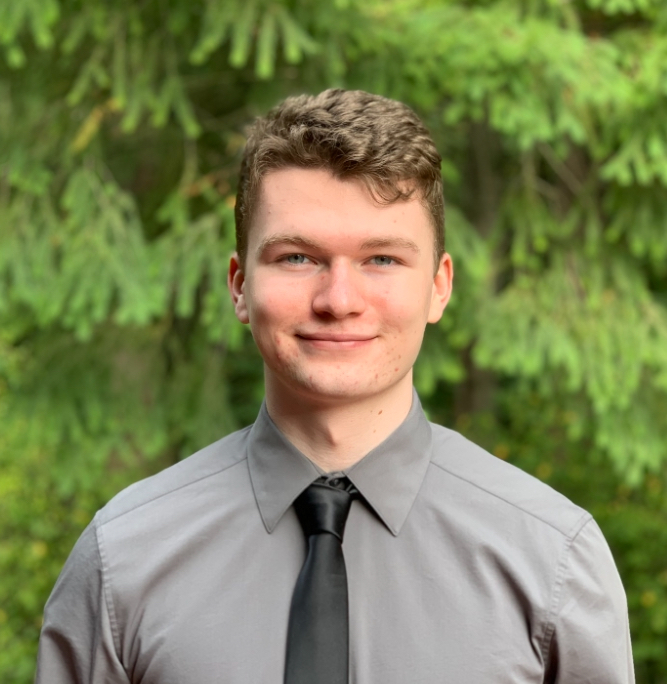 Jason Hillier
Jason Hillier
Jason completed his MS degree in Spring 2025. He previously completed his BSME at OSU where he participated in the MECOP internship program as well as competed in the NASA USLI rocket competition and volunteered with the High Altitude Liquid Engine (HALE) rocket team. His MS research involved data analysis and modeling of particles settling in isotropic turbulence using one-way coupled direct numerical simulations. His thesis title: `Settling of Kolmogorov Scale, Slightly Heavier-than-Fluid Particles in Homogeneous Isotropic Turbulence.'
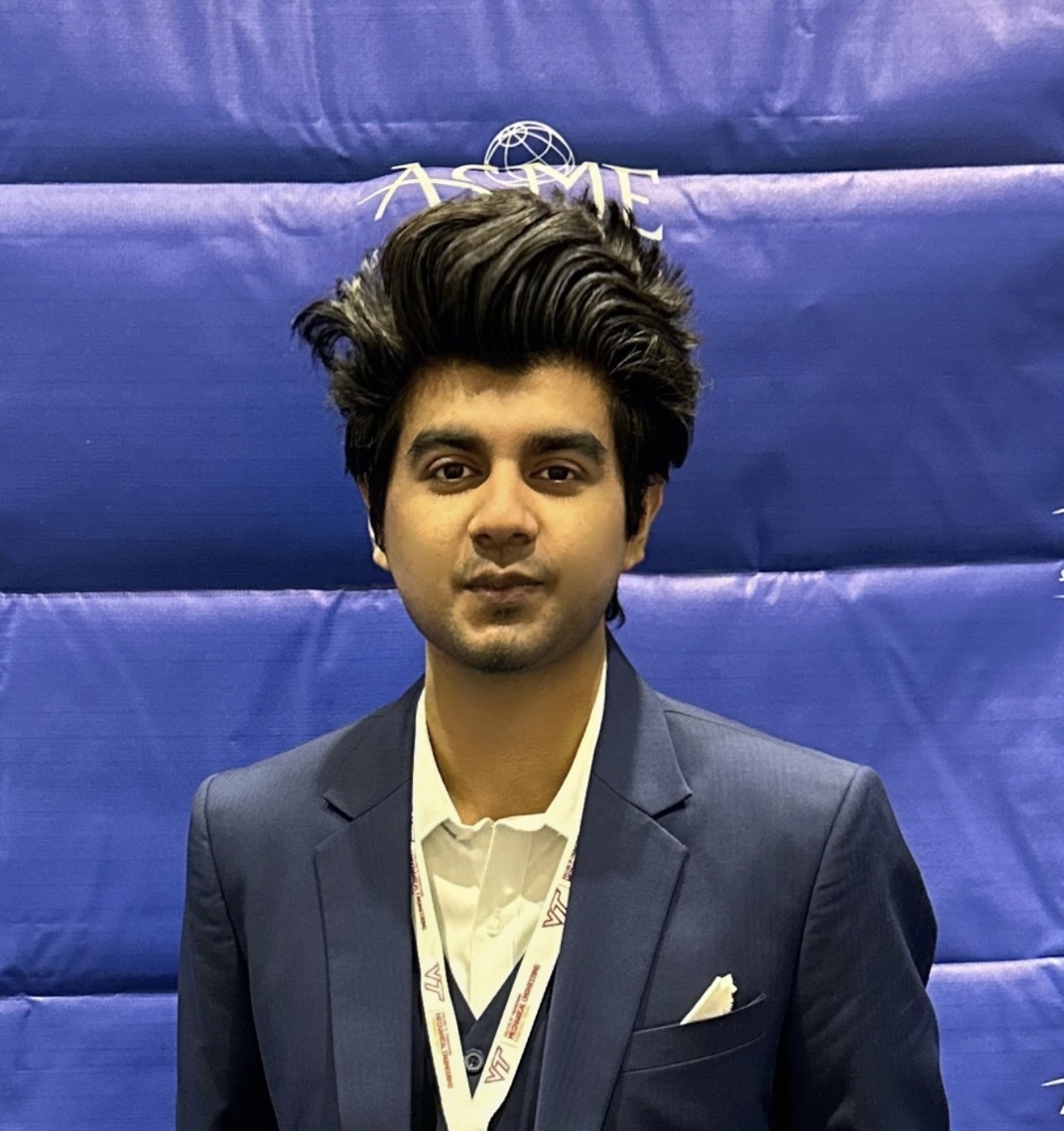 Sakib Shondhi
Sakib Shondhi
Sakib spent one year in our lab as a Ph.D. student. He worked on modeling settling dynamics of anisotropic particles (ellipsoids) in complex flows. He completed his Master’s degree in Mechanical Engineering from Washington State University under the supervision of Dr. Hua Tan, with an MS thesis titled, `Off-Centered Impact of Droplet on a Microholed Hydrophilic Substrate.' He previously earned his Bachelor's in Mechanical Engineering from Bangladesh University of Engineering and Technology (BUET). He plans to pursue PhD using experimental techniques at Oregon State.
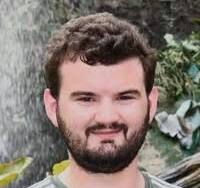 Jordan Strahl
Jordan Strahl
Jordan completed his doctorate degree in Spring 2025. He started his journey as an undegradaute student in the Honors college, and then a Master's student working with Prof. Jim Liburdy and Prof. Deb Pence. He then continued to work with Prof. Liburdy for his doctoral research involving state-of-the art PIV experiments on turbulent open channel flow over a randomly packed porous bed. After Prof. Liburdy passed away in January 2025, Jordan was advised by Prof. Apte for a brief period. Jordan is currently working at Intel in Hillsboro, OR.
 Shashank Karra
Shashank Karra
Shashank completed his Ph.D. (March 2023) in the School of MIME. After completing his BS degree in Biomedical Engineering from JNTU, India, he got a MS degree from University of Tennessee, Knoxville, and had a long career (10 years) in CFD industry (Ansys) and consulting (Baker-Hughes) before beginning his PhD in our group. At OSU, he first worked on developing numerical algorithm of compressible, reacting flows using Space-Time CE/SE methods for oxy-fuel pulsed detonation engine. He later switched to investigating turbulent stream flows with a focus on fully resolved and volume-averaged simulations of hyporheic momentum exchange across sediment-water interface. At OSU, his work was funded by DoE's NETL (CE/SE methods) as well as Pacific Northwest National Laboratory (PNNL) through an internship and partially by DoE and NSF. He conducted very detailed and large-scale simulations of turbulent flow over porous sediment beds and the details of his work can be found in his thesis(PDF) and articles that are under review. Shashank is working at CPFD Software, a CFD companing dedicated to advancing multiphase simulation and technology with application in petrochemicals, clean technologies, gassification, and power generation.
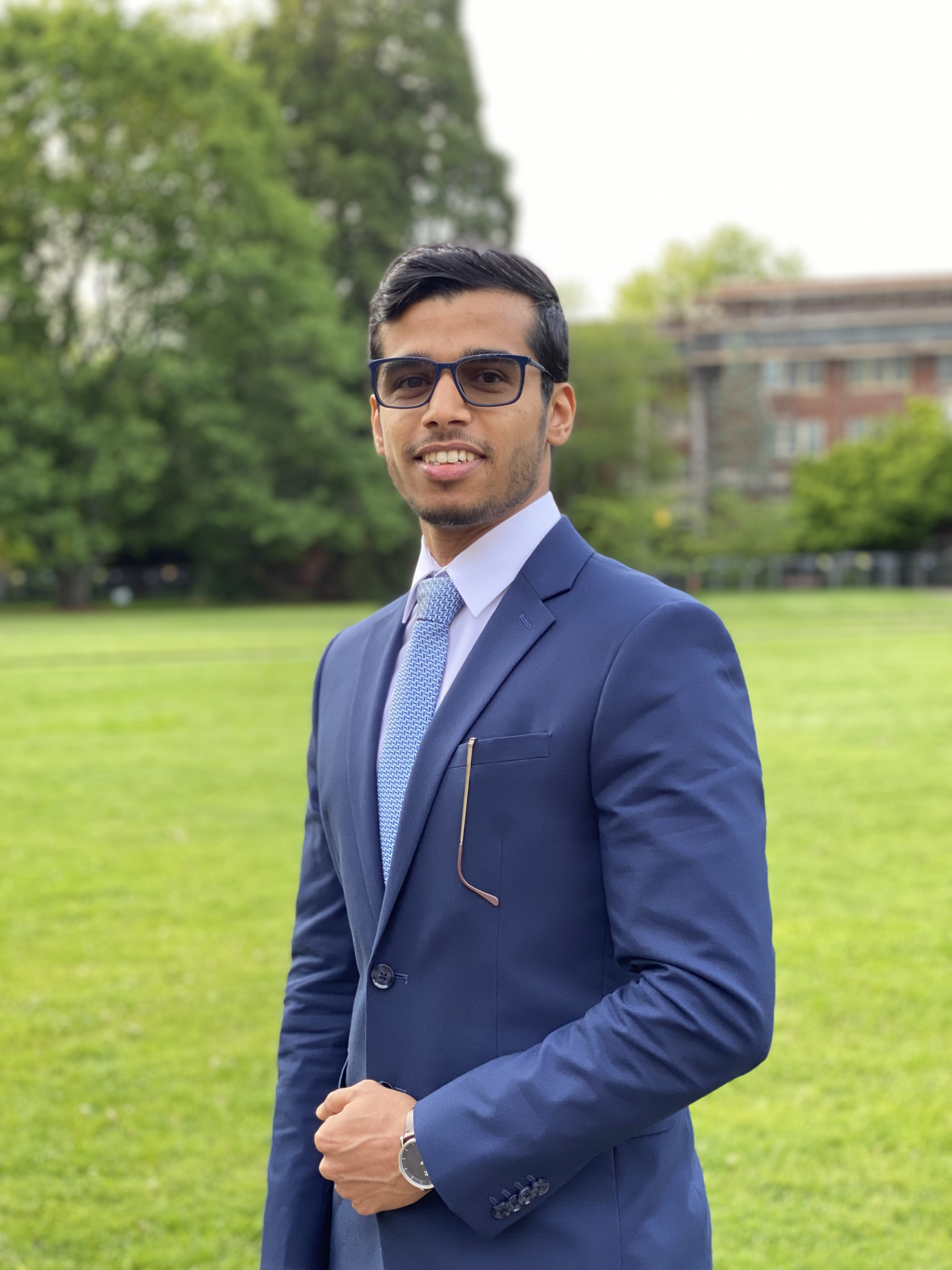
Ahmad Alshehri
Ahmad successfully defended his MS and completed a thesis titled `Modeling of non-spherical particle dynamics in a non-uniform flow' in Spring of 2023. Ahmad developed a numerical solver to simulate particle dynamics of ellipsoidal shaped particles in an Euler-Lagrange framework using a one-way coupled point-particle model. He used this solver to thoroughly verify and validated it against several test cases involving ellipsoidal particles in vortical flow. He then investigated settling of non-spherical particles in a cellular vortical flow representative of a single turbulent eddy to develop a regime diagram for particle settling speed with varying turbulence intensities. This model can be expanded to several particle motions in real turbulent flows in the future.
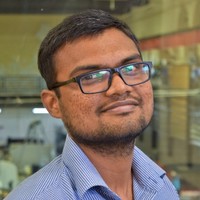
Lokesh Jothi Vincent
Lokesh completed his MS with project option in Winter 2023. He came to OSU through the INTO program (accelerated graduate pathway) and worked on group settling of a cluster of particles. He also got a minor in Mathematics. He is currently an intern as Software developer for an AI-company at iterate.ai.
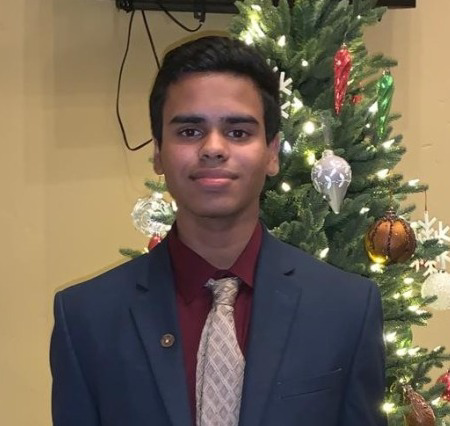 Soam Desai
Soam Desai
Soam attended Kimball High School in Tracy, CA and worked as a summer intern in our group during his junior year in Fall 2020. Soam approached us in Spring of 2020 to seek a potential remote internship as the pandemic was spreading with stay-at-home orders in most states. His interest was to do computational geometry, computer programming using Python and working with large-scale data. This was ideal interest to look into the evolving data on COVID19 cases throughout the US per state and per county and identify "clusters" of COVID19 hot-spots. Soam worked on developing a Python-based module to track COVID19 cases in the US and identify clusters using Voronoi tessellation. He worked remotely and mostly independently with only few pointers on direction of his work. His general interests are in playing tennis and traveling. He will be attending University of California, Berkeley starting Fall 2022.
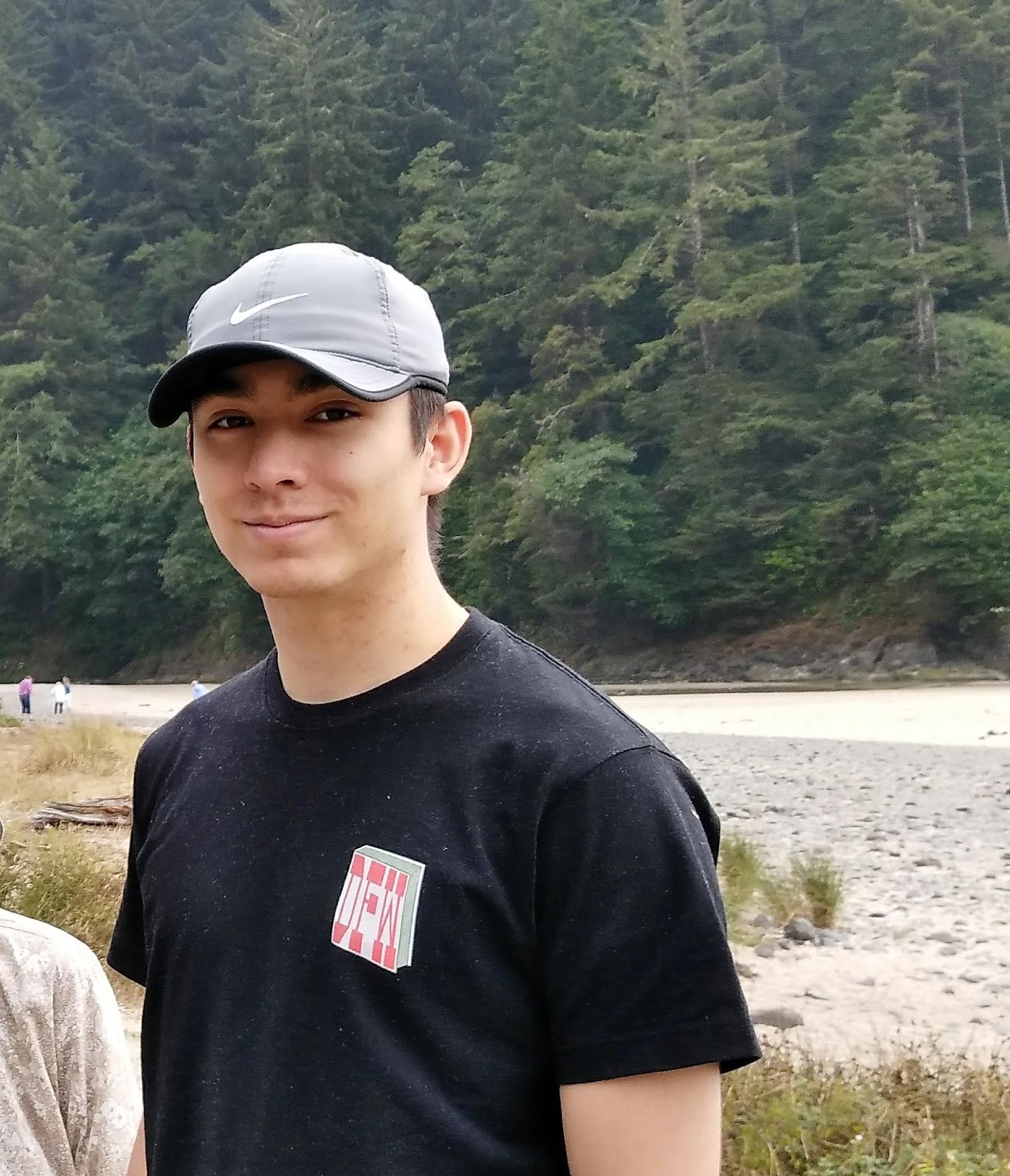 Kai Roberts
Kai Roberts
Kai graduated with his University Honors College (UHC) BS (Thesis) in Spring 2021. He is recipient of the Deloach Work Scholarship from the Honors College. He developed subgrid models to capture the dynamics of non-spherical particles in a complex flow. He developed modules for dynamics of these particles completely from scratch, and during the pandemic, wherein all advising was remote! Kai's models will be used to predict and investigate gravitational settling of non-spherical particles in comparison to the spherical particles in presence of turbulent flow features.
 Pedram Pakseresht
Pedram Pakseresht
Pedram completed his Ph.D. (March 2020) in the School of MIME. He came from Iran with a MS degree. He joined our group to work on a NSF funded project (#1133363) on sediment-bed-turbulence coupling in oscillatory flows as well as NASA-funded project on dense spray modeling. He developed two new approaches to model disperse, particle-laden turbulent flows: (i) volumetric coupling for LES-DEM, and (ii) a unique approach to obtain the undisturbed fluid velocity in two-way coupled Euler-Lagrange modeling. Pedram also taught three courses at Oregon State in Thermal-Fluid sciences. He was participant of the CTR summer program in 2016 at Stanford University, and also attend the summer school at University of Maryland on multiphase flows. He continued in our group as a post-doctoral fellow from April 2020 to January 2021. Presently, he is a research scientist at Dow Chemicals in Houston.
 Xiaoliang He (aka Bryan)
Xiaoliang He (aka Bryan)
Bryan completed his Ph.D. in Fall 2018 in the School of MIME. He joined our group as a teaching assistant in Fall 2013 and was partially funded under the NSF funded project (#1336983) turbulent flow through porous media. He used fictitious domain approach to quantify turbulent flows in densely packed porous media. His work has been published in Physical Review Fluids, Advances in Water Resources, Proceedings of Summer Program at CTR, Stanford, and has articles under review in JFM. Bryan will be a post-doctoral researcher at Pacific Northwest National Laboratatory and will continue his work on complex flows in porous media.
 Nicholas May-Varas
Nicholas May-Varas
Nicholas joined our group as a freshman as a participant of the NSF-funded STEM Leaders program to improve the success, retention, and persistence to graduation in STEM disciplines at OSU. As an Undergraduate Research Assistant, Nicholas gained research experience by working in our lab to find out how engineers use computational techniques to gain insights into physics of complex fluid flow problems. He also took the Honors section of ME373H to learn more about our research.
 YunJi Choi
YunJi Choi
YunJi completed her PhD in Spring of 2018 in the School of CCE. She was co-advised by Dr. Apte and Dr. Arturo Leon (University of Houston). She worked on an EPA funded project looking at multiphase flow dynamics of explosive geysers. She is currently working at CH2MHill and Jacobs in Salt Lake City, Utah.
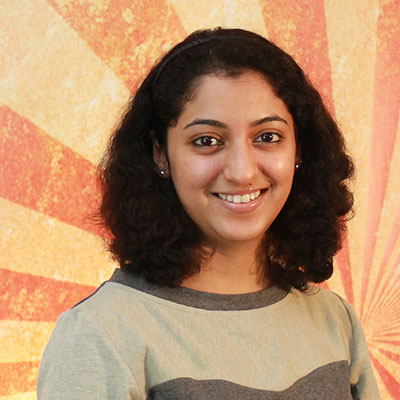 Chaitrali Ghodke
Chaitrali Ghodke
Chaitrali completed here MS (report) in the School of MIME in Spring of 2018. She worked on DoE's Solar Energy project (Sun Apollo). She completed her Bachelor's degree from University of Pune in Chemical Engineering and also worked as project research assistant at IIT, Mumbai. She worked as an intern at Exa Corp. in San Francisco.
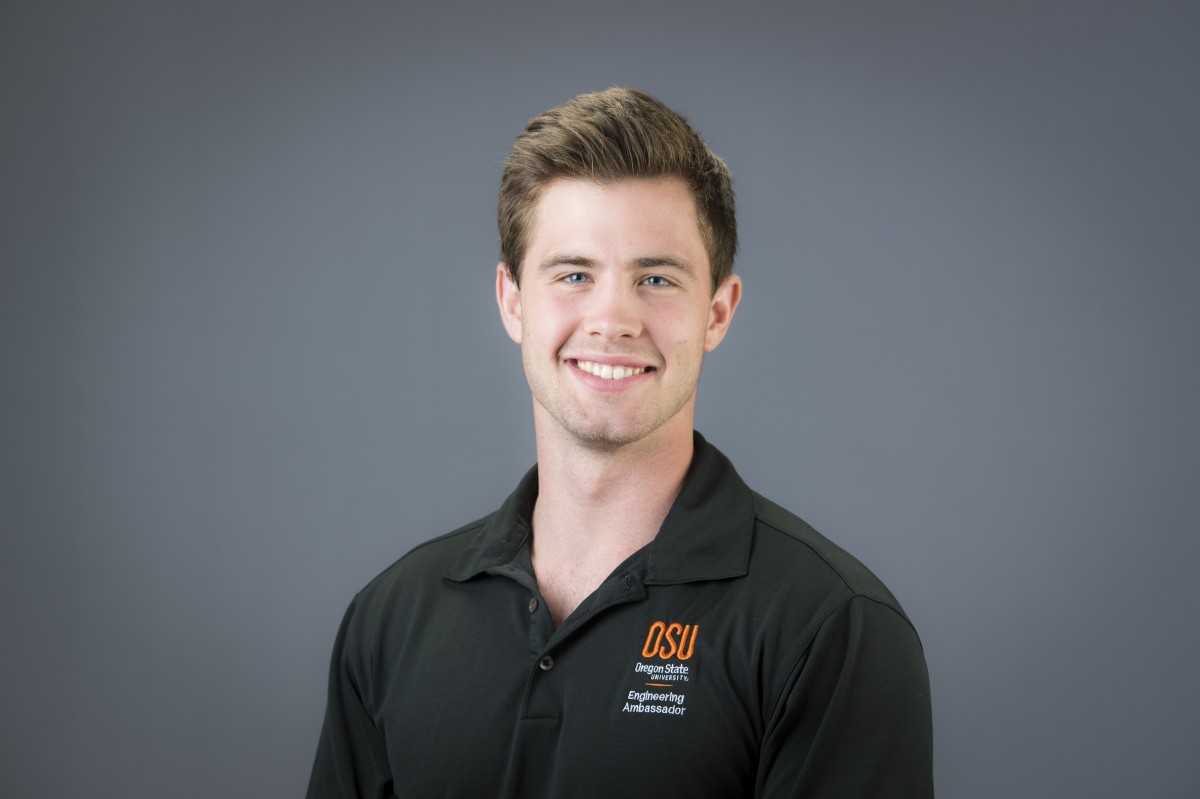 Jeremiah Hauth
Jeremiah Hauth
Jeremiah did his BS as a University Honors College (UHC) student. For is thesis he looked at developing an unstructured grid based solver for compressible, reacting flows in two-dimensions applicable to problems involving shocks and detonations waves. He completed his BS with honors in Spring 2018 and is now a graduate student at University of Michigan, Ann Arbor working with Prof. Ryan Huan.
 Chaitanya Ghodke
Chaitanya Ghodke
Chaitanya completed his PhD degree (March 2016) in the School of MIME. He got his batchelor's degree in Pune, India and his MS in Aerospace at Georgia Tech in 2009. He then worked at CD-Adapco as a CFD application engineer. He joined our group in Winter 2013 to work on a NSF funded project (#1133363) on sediment-bed-turbulence coupling in oscillatory flows. His work has been published in Journal of Fluid Mechanics, Journal of Computational Multiphase Flow, Proceedings of the Summer Program, CTR, Stanford. He worked at GE Global research for a short period and is presently working at Convergent Science Inc. Check out his
latest publications at Google Scholar.
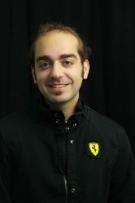 Sassan Ostavr
Sassan Ostavr
Sassan received his Ph.D. in 2017 in the School of CBEE and he was co-advised by Dr. Brian Wood (lead advisor) and Dr. Apte. Sassan worked on a NSF funded project on turbulence in porous media (#1336983) and is using computational and theoretical analysis tecniques. He is a research fellow at the Harvard Clinical and Translation Science Center.
 Bo Liu
Bo Liu
Bo Liu received his Master's degree in 2017 in the School of MIME. Bo came to Oregon State under the INTO program as an MENG student.
 Charles Rymal
Charles Rymal
Charles Rymal received his MS (December 2014) in the School of MIME. He did his BS at OSU in Mechanical Engineering. He worked on the Sunshot Solar Concentrator Project funded by DoE under the EERE program. Charles used CFD to help design microchannel based solar receiver for efficient removal of solar heat flux on the order of 100W/cm2 using supercritical CO2 and keeping the pressure drop small.
 Justin Finn
Justin Finn
Justin Finn received his PhD (March 2013) and MS (June 2009) in the School of MIME. He grew up in New England area and got his BS (2007) from University of Massachusetts, Amherst in Mechanical Engineering. He was recipient of several awards and fellowships during his career at OSU including the ARCS fellowship, Lundstrom fellowship, Rickert fellowship, APS student travel award and NRECS fellow for summer research at Naval Research Laboratory. His PhD work involved Direct Numerical Simulation of flow and scalar transport in porous media. He developed a fictitious domain approach for this work as well as new algorithms to obtain Lagrangian Coherent Structures LCS in 3D and on the fly in a DNS simulation. For his MS, he worked on bubble-vortex interactions using discrete bubble model (DBM) and fully resolved simulations (hLE). He is currently a post-doctoral fellow at University of Liverpool, UK. He is also our mountain-biking champion and our LCS guru. His work has been published in wide range of prestigous journals including Chaos, Journal of Computational Physics, Physics of Fluids, Journal of Fluid Mechanics and International Journal of Multiphase Flow. Learn more about Justin and his research at his website.
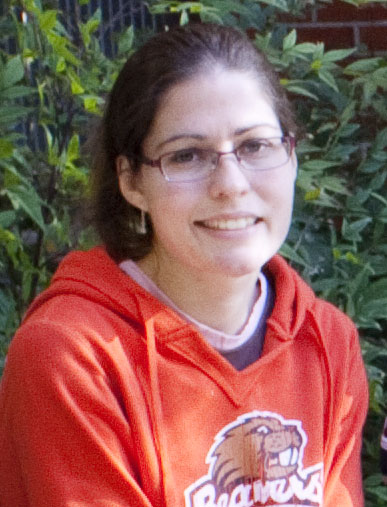 Tracie Jackson
Tracie Jackson
Tracie finished her PhD in Geosciences (CEOAS) together with a minor in Mechanical Engineering (ME) and was co-advised by Prof. Roy Haggerty and Dr. Apte. She came to OSU from University of Nevada and worked on a NSF-funded collaborative project (#0943570) (Surface transient storage in dead zones: Residence times from stream morphology, velocity and CFD modeling). This collaborative work involved training of hydrologists and geo-scientists in CFD and RANS/LES methodologies, and resulted in around seven journal articles. Tracie is currently employed by the USGS.
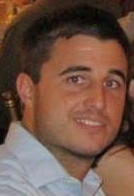 Andrew Cihonski
Andrew Cihonski
Andrew received his M.S. in 2010 and his PhD. in 2012 in the School of MIME. He is presently a Post-Doctoral fellow at Los Alamos National Laboratory. He grew up in San Jose, CA and is a graduate of Bellarmine College Prep (2001). He received his B.S. in Applied Mathematics from California State University at Chico (2005) and M.S. in Computational Mathematics from Texas A&M University (2007). He also was an intern at Hewlett Packard during the summer of 2012. His MS research work at OSU focussed on understanding turbulence-particle interactions in channel flows. Specifically, he looked at modeling the effect of fluid displacement by subgrid particles in particle-laden LES/DNS studies. His PhD research work (Thesis: Modeling and Simulation of Volume Displacement effects in Multiphase Flows) focussed on bubble-vortex ring interaction problem and understanding how to model the effect of few microbubbles on a traveling vortex ring. A subgrid model accounting for volume displacement effects was developed. He also performed parametric studies to understand when volume displacement effects are important compared to momentum reaction forces in disperse two-phase flows. Andrew's PhD work was published in JFM and also received Robert T. Knapp Award as decided by the ASME's Fluids and Engineering Awards Committee. This award is presented annually for the most outstanding original papers dealing with analytical or laboratory research in fluids engineering.
 Joseph Skitka
Joseph Skitka
Joe received his MS degree in Spring of 2013 in the School of MIME. He came to Oregon State from Massachusetts and with a Physics background. He isworked on development of fictitious domain/immersed boundary type approaches for fully resolved simulations (FRS) of arbitrary shaped immersed bodies in fluid flow. As part of his research, he developed a fully parallel, highly scalable (up to 1000+ processors), immersed boundary solver from scratch. His research code was used to study turbulent oscillatory flow over a rough bed. He is joining Brown University as a PhD student in the Physics department. He was our group's mountain/rock climbing expert.
 Kevin Drost
Kevin Drost
Kevin received his B.S. degree (with honors) (June 2010) and M.S. (June 2012) in the School of MIME. He grew up in Corvallis. For his UHC thesis, he performed direct numerical simulation of a novel "leading-edge flap concept" to study its effect on laminar separation bubble and flow dynamics of micro-air vehicles at low Reynolds numbers (Thesis: Direct numerical simulation of a flat wing with a movable front flap at high angles of attack and low Reynolds numbers). His work resulted in a MIME fellowship. For his MS degree, Kevin worked with Dr. Apte and Prof. Haggerty (CEOAS) on a NSF funded project (#0943570 Surface transient storage in dead zones: Residence times from stream morphology, velocity and CFD modeling) and performed simulations of turbulent flow over idealized dead zones in natural streams using the k-w model as well as large-eddy simulations. His thesis work (Thesis: RANS and LES predictions of turbulent scalar transport in dead zones of natural streams) resulted in quantification of residence time in dead zones as a function of the dead zone recirculation, the geometric parameters and charactersitics of the upstream boundary layer. His work was presented at ASME conference in Peurto Rico. Kevin, as a MS student, had the opportunity to present his work at several international conferences ASME confernce in Hawaii, ASME conference in Peurto Rico, APS conference in Baltimore. He is currently a research engineer at NuScale Power in Corvallis.
 Daniel Peterson
Daniel Peterson
Daniel received his M.S. degree (June 2010) in the School of MIME. He grew up near Portland, OR and received his B.S. from the George Fox University. His research topic was simulation-based design and control of microchannel reactors for solar-energy based bio-reforming for effective production of solar fuels (Thesis: Numerical simulation of micro/mini-channel based methane stream reforming). He was co-advised by Dr. Apte and Dr. John Schmitt. He is an avid hiker and has hiked the South Sisters and Mount Hood. Presently, he is a Ph.D. student in Industrial and Manufacturing Engineering at Oregon State.
 Benn Eilers
Benn Eilers
Benn received his M.S. degree (June 2010) in the School of MIME. He was co-advised by Prof. Vinod Narayanan and Dr. Apte on the research topic of a solar receiver and microchannel reactor for solar-energy based biofuel reforming. He built a new experimental setup on production of solar-fuels using methane reforming (Thesis: Microchannel steam reforming under constant and variable surface temperature profiles). He was a summer intern on student fellowship at Edwards Air Force Base, CA together with Prof. Narayanan. He loves his motorbikes!
 Ehsan Shams
Ehsan Shams
Ehsan received his Ph.D. degree (December 2009) in the School of MIME. He came to OSU from Tehran with a BS (1997) and MS (2002) in Mechanical Engineering from University of Tehran, Iran. He worked at the engine research center of Mega Motor Co., Tehran, Iran and cooperated with Vehicle, Fuel, and Environment Research Institute (VFERI) at University of Tehran (2000-2006). His research topic are modeling bubble dynamics in cavitating turbulent flows (Thesis: Numerical simulation of cavitating bubble-laden turbulent flows). Presently he is a post-doctoral fellow at University of Arizona
 Mathieu Martin
Mathieu Martin
Mathieu received his M.S. (March 2009) in the School of MIME. He came to OSU from Bordeaux, France under an exchange program to complete his French MS in Mechanical Engineering (2007) at ISTIL, Lyon (France). He also completed a minor in scientific visualization in the School of EECS. His work (Thesis: Numerical simulation of flow maldistribution in microchannels using fully resolved simulation) was on on modeling and control of flow maldistribution in microchannels using fully resolved simulation (FRS) and resulted in two journal articles and one paper in conference proceedings. He is currently working at Areva, Inc in Richland, Washington.
 Stephen Snider
Stephen Snider
Stephen Snider received his MS degree in the School of MIME in June 2008. He grew up in the Pacific Northwest and joined OSU as an undergraduate student and continued on for his MS in the thermal-fluid sciences. His research focused on flow structure identification in separated turbulent flows (Thesis: Detection and analysis of separated flow induced vortical structures). His research resulted in one journal article and three conference proceedings. He joined Genie Industries near Seattle in 2008.

